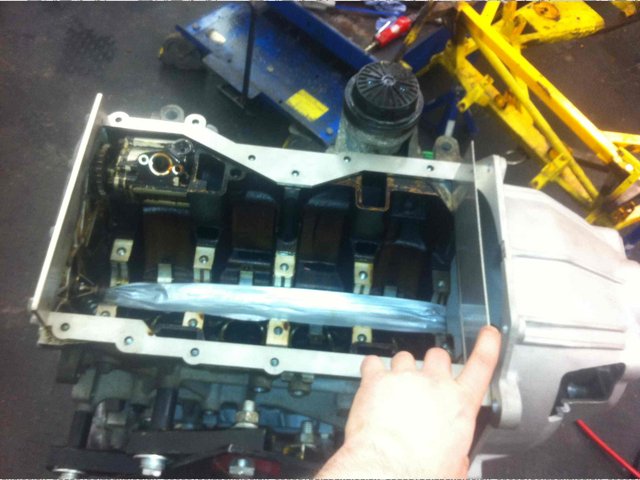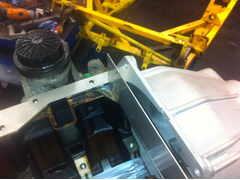
Description

So, the sump parts are back from the cutters, and I find them to be good.
However, I have found out that whilst working stainless is great for two reasons, it's a pain from a third.
The benefits are:




Hi
firstly get yourself some decent cutting fluid as it has high pressure additives in it. Ordinary oil cant cope with the pressure generated by the cut.
I use Rocol RTD. Excellent stuff. If you have trouble let me know and I'll send you a thimble full which will do many holes!
Secondly, can you weld a stainless nut behind the hole you have drilled and then you won't have to tap anything?
As to jigging, I weld my steel sumps while they are bolted to an engine so that they don't twist to much. It is unlikely to move the engine block
by welding a sump on it and there is no translation error from doing them on a separate jig. Obviously take measures to ensure you don't drop
anything into the engine. 
Cheers Si
Hi Si
thanks for the advice about cutting fluid - I'll buy some this weekend.
The block is ally as well, and I'm keen to expose it to as little heat as possible. my jig (as it were) is a piece of 10mm thick steel with the
necessary holes cut into for securing the base plate. I generally just plonk whatever I want to weld on the plate rather than struggle with the clamps
onto the piece. Life is way more efficient this way.
I wanted to avoid doing all the welding on the block (tempted to buy a scrap block if I start making the sumps for pocket money), but I wanted to be
very sure I had the parts orientated in the right places.
I had thought about captive nuts, but the area I'd need them are around the run the timing and oil-pump chains and I didn't know if
they'd foul. Hence getting the right length bolt in there instead and locked into a thread.
Besides, I get to learn something new 
Right - you just can't beat the right tool for the job.
I bought some cutting oil today in a spray can and 20 minutes later, I had 4 nicely tapped holes. I offered them up to the block and front cover and
the fit was perfect.
I was careful tapping - one turn in, back off half a turn, spray down the gap, repeat, turn out, blast clean with air, relube, cut, job done.
The tapered part of the tap looks to be a little worn now, but it felt like it could keep going. The bolts (or rather socked headed cap screws) turned
in perfectly by hand whilst it was on the block.
Result.